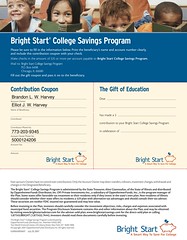On the food beat, there was a significant study that came out last fall about a link between preservatives (& food colorings) and hyperactivity in kids. This was reported in the British medical journal Lancet, which also means something. As someone who at least moonlights as a professional scientist, I can tell you that there's a big difference between studies that show a clear cause and effect relationship -- which this one does -- and studies like this one on kids who go to day care. That's a study that doesn't show much of anything at all: no clear cause, only a small effect. Journalists, unfortunately, generally report all studies on the same level.
Sodium benzoate in particular was tested in the Lancet study, and found to cause clear hyperactivity effects. Eat chemical ==> get hyper. So today while Elliot was helping himself to gobs of hummus with a tiny fork, I checked the ingredient list, and sure enough, there was sodium benzoate. Not all the hummus at the supermarket has preservatives in it, but this kind did.
It's not that I stopped the boy in mid-bite, but I did make a mental note. There are lots of kinds of hummus on the shelf. Just get the one with none of the weird chemicals in it.
We got in the habit of looking at ingredient lists when Whit and Jen were around last year, and Jen was saying, "Why the hell are there so many ingredients in Cheerios?" And we were like, Dude, don't worry about it. It will be fine.
And it probably will be fine, either way. But they have a good point. There just don't have to be that many ingredients in any food product -- food is not that complicated. But the point is also not to become superstitious or frightened. I'm just going to buy different hummus from now on.
Subscribe to:
Post Comments (Atom)



5 comments:
Interesting article. Here is a link to a study synopsis on the website of the Food Standards Agency, who conducted the study: http://www.foodstandards.gov.uk/science/research/researchinfo/foodcomponentsresearch/allergyresearch/t07programme/t07projectlist/t07040/
I have some reservations about their conclusions, mainly:
1) there was sample bias, as the families who participated were volunteers and not randomly selected to participate (as you know as a moonlighting scientist, certain kinds of people are willing to volunteer for studies (fill out surverys, etc), which often biases outcomes)
2) as far as I can tell, the study did not control for confounding variables, like socio-economic status, diet, physical activity, sedentary activity, etc. The conclusions would be much better supported if they were proven to withstand the effects of confounding.
3) the authors indicate: "The results showed that in the sample of 3 year old children Mix A showed a significant adverse effect on the average level of hyperactivity within this group, compared with the placebo, but Mix B did not. For the 8-year old children, Mix B but not Mix A showed a significant adverse effect on the average level of hyperactivity compared with the placebo." This doesn't seem like a very clear cut result to me. Also, for the record sodium benzoate was in both mixes in the same dose, and I would guess if it is the culprit, statistically significant differences in behavior deemed "hyperactive" would have been noted across the board.
Now, that is not to say I don't WHOLEHEARTEDLY agree that keeping one's diet as simple/natural as possible is absolutely the way to go. We try to do that every time we got to the grocery store. A dietician I saw for a year a while back convinced me sugar is better than processed corn syrup, butter is better than margarine, etc., really, things that are as close to the whole ingredients are best (it is never a good thing when there are two paragraphs of ingredients on a box of Mac and cheese).
That said, we parents have a lot to be wary of. You are right on to be mindful of what goes in Elliot's mouth, though I think moderation is key...particularly when next week there could be an article on a study heralding the benefits of sodium benzoate as a food additive!
Besides, hyperactivity sometimes leads to hyperfocus, which can be quite stimulating and lead to all sorts of success.
My current houseguests from remote Greenland are even in on the trend to eat local; they have shunned Danish meat like poultry and beef, and are only eating local reindeer, muskox, moose, and seal.
They don't get many vegetables.
I was surprised to hear that even their remote part of the world, they have returned to eating local already, despite relatively recent foreign shipping to their area.
(and surprised that they will eat local, while on the same day doing geology research to try to lure aluminum smelters to their land)
I just spent the day at the Museum of Science and Industry chaperoning 6th and 7th grade boys (yes, nothing but boys)hopped up on Flamin' Hot Cheetos and M&Ms. I will concur with the study's finding.
It's really hard to suss out the power of the sugar separately from the power of the preservatives. My guess is you were mostly witnessing sugar. Nothing naturally occurring contains as much sugar as M&Ms.
A few things I'd like to point out:
*I noticed its the hummus with pretty toppings (therefore better/more natural looking hummus) that is laced with sodium benzoate.
*Sodium benzoate in combination with vitamin C (a common practice in things like fruity sodas) combines to make benzene. I say keep an eye on the food additives, especially chemicals that are closely related to known poisons and carcinogens.
*Note that the EU is busy banning artificial colors.
*I need this book Why There's Antifreeze in Your Toothpaste: The Chemistry of Household Ingredients
Post a Comment